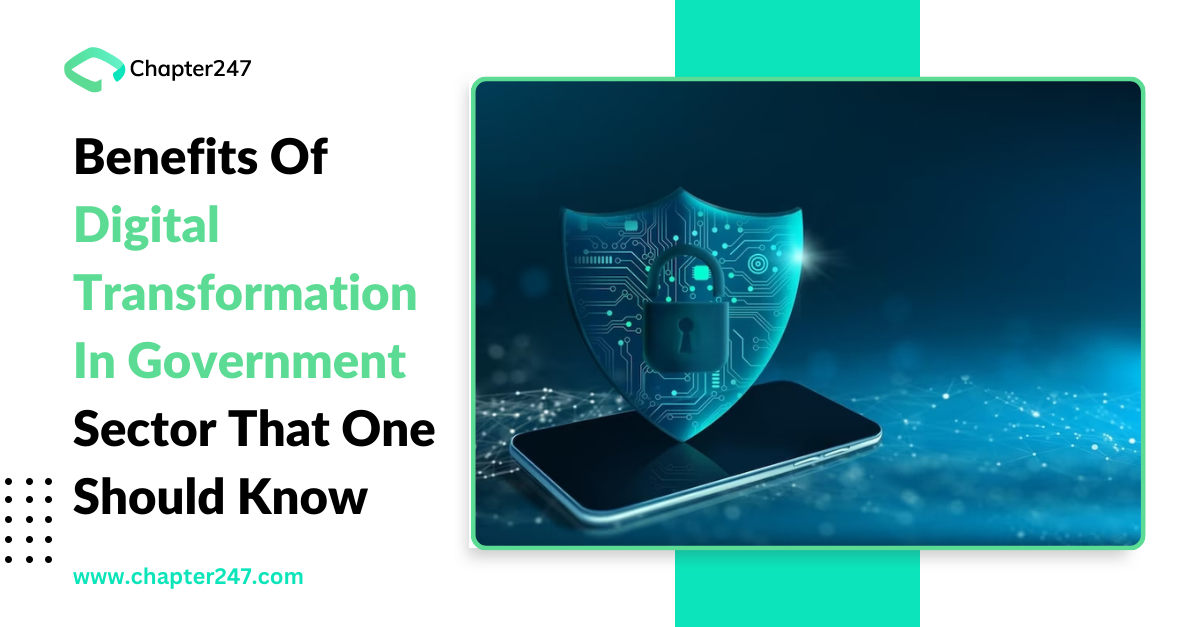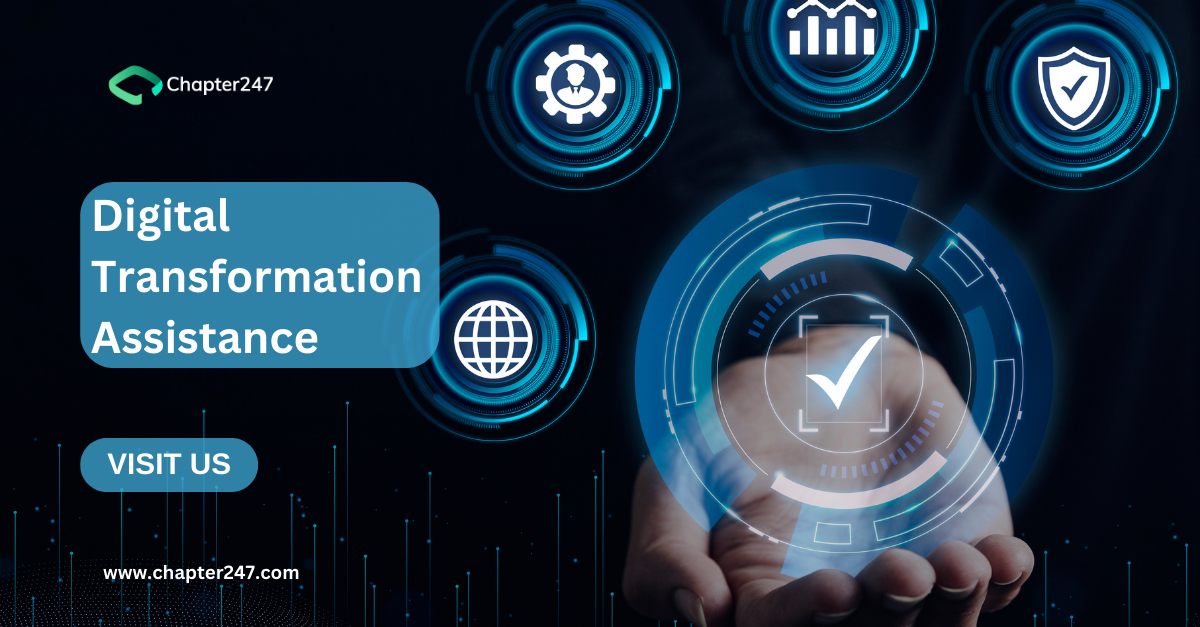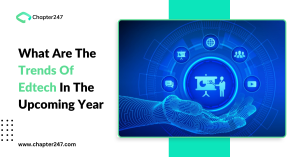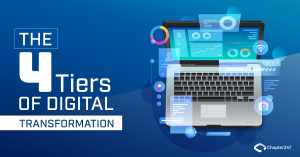Technology is shaping the work culture in every industry with the help of big data, automation, customer experience software suites, hybrid work, and more. The government sector is not an exception. It is also growing with the flow of data transformation technology day by day. However, this path could be smoother. There are lots of benefits and challenges as well. Let’s unfold it together.
Content Table
- Introduction
- What Does It Mean In Digital Transformation In Government
- 5 Benefits Of Digital Transformation In The Government Industry
- Challenges In This Revolution
- Conclusion
Nowadays, government sectors are also gradually investing in technology to bring the revolution by their side. According to the research of Acuvate, 58% of government sector respondents to Gartner’s 2021 CIO Survey said they would like to see more IT spending go towards cyber/information security, 56% towards cloud services and solutions, 54% towards business intelligence and data analytics, 41% towards process automation, and 36% towards artificial intelligence and machine learning.
What Does It Mean In Digital Transformation In Government
To improve productivity, efficacy, customer experience, and service delivery, digital transformation refers to upgrading manual procedures and outdated systems with modern technology across the board.
Digital transformation in the governmental sector refers to applying technology to enhance public services and produce a more positive customer experience for individuals and businesses interacting with government agencies.
The objective of digital transformation in government is to establish a public sector that is more responsive, efficient, transparent, and matches the changing requirements of citizens. It fundamentally changes how government offices function by employing technology to improve data management, quicken procedures, and enhance the public experience.
However, creating personalised websites, user-friendly applications, AI-driven technology and much more is taking a growing path in this industry.
5 Benefits Of Digital Transformation In The Government Industry
While undoubtedly challenging obstacles are associated with digital transformation in the governmental sector, these are greatly outweighed by the benefits, which improve efficiency for government offices and the citizen experience. The most notable benefits are;
- Automating manual operations and processes
The leading causes of the government sector’s inefficiency are frequently slow procedures and excessive dependence on human labour.
Ever consider how many monotonous tasks government workers conduct daily? Technology may be used to operate numerous operations efficiently, including data input, document approvals, appointment scheduling, and much more.
Governments can replace outdated manual procedures with automated workflows by implementing current technologies, freeing staff members to concentrate on high-priority work.
- Boosts productivity, job happiness, and internal morale
Employees in the public sector are usually overworked. The first step in enhancing employee well-being is to support digital transformation.
Using current digital tools increases the level of happiness that workers receive from their daily employment. Digital transformation not only automates repetitive tasks but also introduces more productive collaboration tools, enhances employee relations, and makes the workplace happier. It also gives government employees the tools to concentrate on more essential tasks that call for critical thinking, creativity, and innovation.
- Increase User Experience
Before the digital revolution, citizens had to communicate with the government manually by filling out forms or physically visiting offices. People now expect public sector organisations to provide digital services in a virtual environment.
In addition to increasing process efficiency, digitising citizen-facing services like licence and permit renewals will enhance your reputation with clients.
- Saying Bye To Manual Process
Pens and papers are frequently used in government record-keeping systems, which can be costly to operate and maintain. It causes mistakes and delays and prevents the speedy access to and sharing of information between departments.
By implementing contemporary digital technologies, your company can become less dependent on paper records and increase data accessibility. According to a Deloitte report, 83% of government executives think that automation processes greatly influence their company.
Additionally, digital records can be secured with encryption and access controls, which lowers the possibility of data breaches or unauthorised access, so they are safer than physical papers.
You will need to invest in new cloud platforms to manage your data across government employees (like an HCM system) and citizen data (think of a citizen-specific CRM system).
- Access More Data On A Single Click
A growing number of citizens interact with governments via digital means like websites, mobile apps, and social media as more government services and information are available online.
Governments can gather more information on the tastes and behaviours of their residents thanks to digital transformation. Public sector organisations can construct their services to better serve the demands of their citizens because of the abundance of data produced by digital interactions.
Furthermore, by monitoring and assessing government policies and programmes, this data might help governments allocate resources more. According to Gartner, more than half of government agencies will have updated their essential legacy apps by 2025 to cut expenses, increase resilience, and increase the capacity of data adaptability.
Challenges In This Revolution
For the public sector, digital transformation is an essential step. In this path of transformation, apart from benefits, there are some challenges to face.
Cyber Security Issues
Sensitive and private information handled by governments must be protected against online threats and other types of attacks. The government is more open to hacking attacks as it digitizes more data and services. Governments must invest significantly in security measures to avoid unwanted access to private information.
Differentiation Of Government Sectors
Many government organisations function in groups, with little departmental cooperation and communication. According to the research by Gartner, organisational groups are regarded by 51% of the public sector as one of the main obstacles to digital transformation. Delivering cross-silo digital projects requires a concerted effort from several teams and agencies for successful digital transformation.
Understand the Best Digital Skill
To adopt the power of technology, it is necessary to understand the trend and most upgraded technology in this field. Most government agencies and public services rely on outdated manual processes and legacy technology. Therefore your staff will need to retrain. This raises issues regarding developing new onboarding programmes, upskilling personnel across several generations, and offering technical support and training to government employees.
Government agencies must spend money on digital skills training to introduce their staff to new digital tools and processes. Balancing continuing operations and exercise will be challenging, but doing so is essential to promoting technology adoption and effectively carrying out digital transformation.
Conclusion
With Chapter247 now, you can also explore some benefits and skilled services that can enhance the productivity of government sectors. Then, don’t miss the chance. Connect with us today to get more reliable services and research. Embrace the flow of revolution in the government industry.









